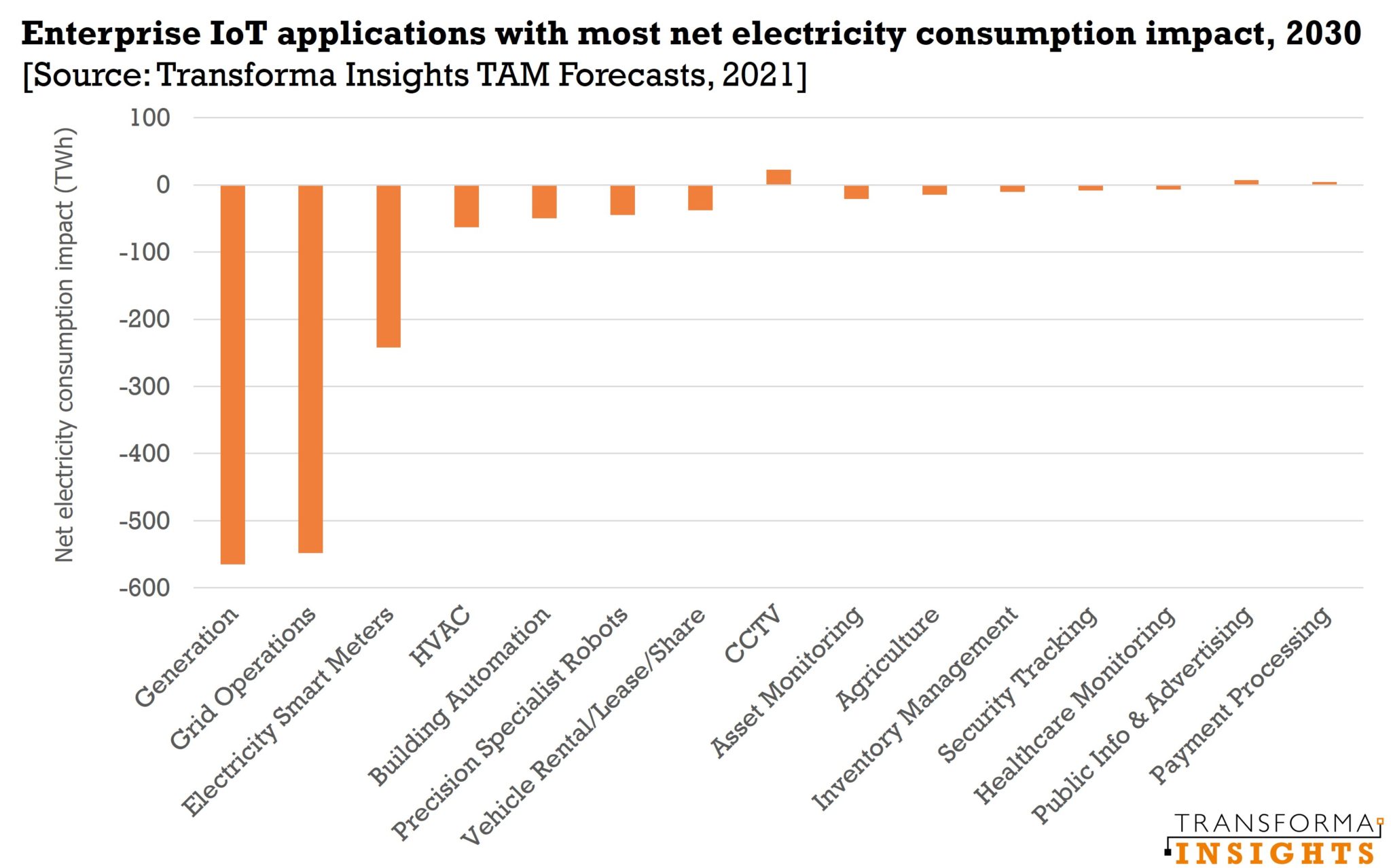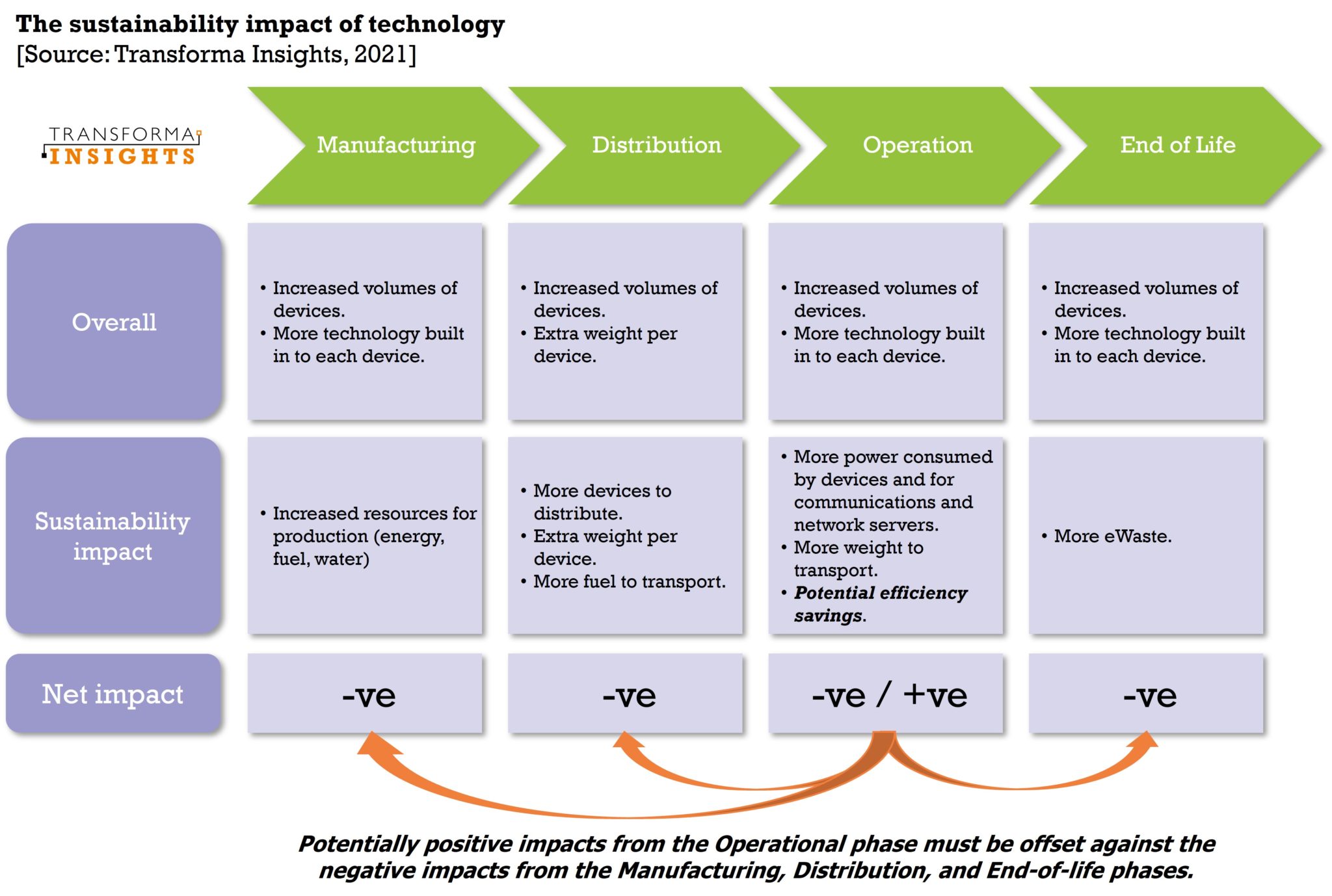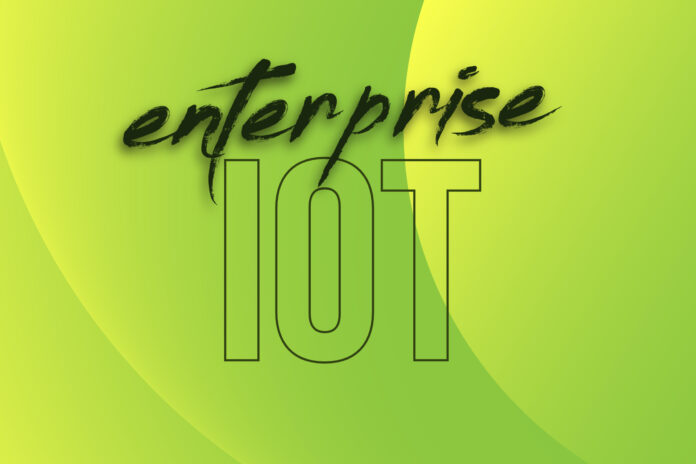The use of IoT hardware and software applications will have a very positive impact on global sustainability but the trend masks significant variations between use cases, and over the lifecycle of the device. This was one conclusion from a recent report from Transforma Insights, ‘On balance, IoT is very beneficial from a sustainability perspective’.
The report considers the overall sustainability implications of the deployment of IoT, including analysis of the impact on electricity consumption, (hydrocarbon) fuel consumption, water consumption, and CO2 emissions. This article highlights two of the key findings.

Enterprise IoT applications are overwhelmingly beneficial…
Overall, IoT solutions are good for the planet, with sustainability benefits that significantly outweigh sustainability costs. Behind this high-level message are two clear dynamics which distinguish enterprise from consumer use cases.
Enterprise IoT applications are generally deployed to increase efficiency and reduce costs, for instance in building automation or precision agriculture. Naturally these have associated net sustainability benefits. Meanwhile, many consumer-sector IoT-enabled solutions are more focused on improving and enhancing an overall user proposition, and so can often be associated with net negative sustainability impacts.
The most impactful enterprise IoT applications in terms of electricity consumption are illustrated in the figure below, with savings below the line (negative figures) and incremental consumption above the line (positive figures). The top energy savers are those related to energy generation and distribution, including smart grid and smart meters. 
There is some nuance to considerations over energy consumption from IoT devices. In many cases it can represent a trade-off against a positive sustainability impact elsewhere. Several IoT applications which have a net cost in terms of increasing electricity consumption are actually particularly beneficial from a net sustainability perspective by reducing (hydrocarbon) fuel consumption.
The calculation of the trade-off needs to also take account of the fact that electricity can be more readily generated from renewable sources.
…but are offset by manufacturing, distribution, and end-of-life disposal
The relationship between new technology and sustainability is complex. One of the key trends highlighted by the report is the need to consider the full lifespan of the IoT device when calculating the impact. The report includes consideration of the impact of associated manufacturing, distribution processes, and also end-of-life disposal to develop a whole-lifecycle picture of sustainability impact.
This sustainability impact across the lifecycle elements, illustrated in the figure below, is, with few exceptions, consistent across all new technology deployments: the net impact of new technologies in the ‘manufacturing’, ‘distribution’, and ‘end-of-life’ phases is generally negative (although exceptions include, for instance, the advent of shared car schemes resulting in an overall reduced level of vehicle manufacturing).
There is a significant sustainability cost in creating, distributing and disposing of these devices. The key to calculating the overall sustainability impact is in the ‘operation’ phase, where solutions may generate a net benefit.
Some use cases have very little benefit. IoT-enabled televisions supporting on-demand content mostly simply contribute to e-waste and power consumption (for local content engines, remote servers, and connectivity). This is offset by a negligible impact in terms of manufacturing and distribution; we would expect people to buy new televisions whether or not there are connected models available.
Contrast this with other IoT solutions which are explicitly or implicitly aimed at conserving resources, such as road vehicle fleet management or smart connected heating, ventilation and air-conditioning (HVAC) systems. These rack up considerable benefits in terms of fuel and/or electricity consumption over the lifespan of the device, more than compensating for the costs incurred in their overall lifecycle.
Jim Morrish has over 20 years of experience in strategy consulting, operations management, and telecoms research. He was a Founder and the Chief Research Officer of Machina Research, acquired by Gartner in 2016. He is responsible for the addition of the term Low Power Wide Area (LPWA) networking to the IoT lexicon, and is a co-author of the Ignite|IoT project management framework for IoT. He has served as Co-Chair of the Digital Transformation Working Group of the Industrial Internet Consortium, and is a member of the advisory boards for a number of digital transformation industry conferences.

